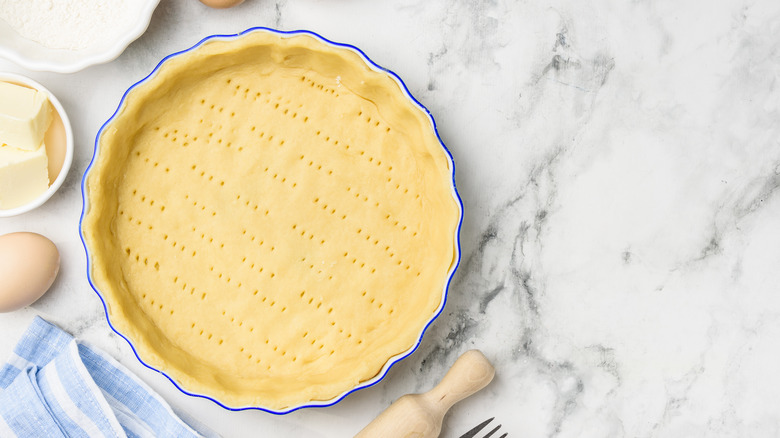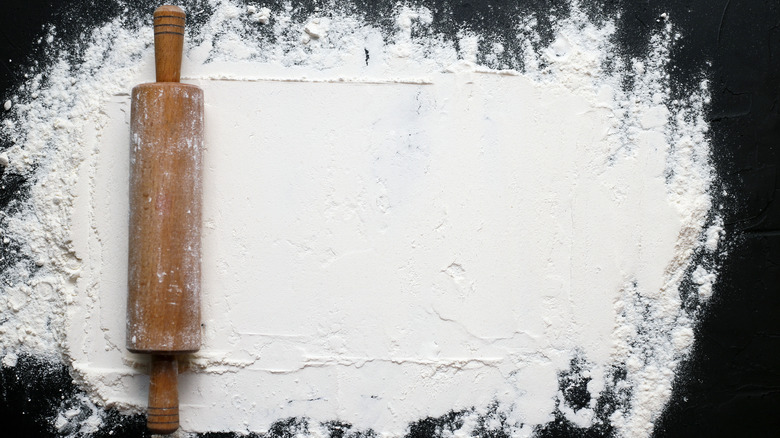The Absolute Best Thickness For Pie Dough
There is little else to look forward to during the cold season than the collection of autumn pies that line the windows of shops and fill your kitchen with the delicious scents of cinnamon, baking fruit, and, of course, a buttery crust. Even the ancient Egyptians indulged in the art of pie-making, though back then, the crust wasn't always meant to be eaten (via American Pie Council).
If you like to make pies, knowing how to make your own signature crust is an absolute must. But pastry is a pain: You must take several factors into consideration when forming your pastry, weighing out all the correct proportions, keeping an eye on the temperature, not overwork the dough, and somehow fully incorporating all the ingredients. And rolling out your pie crust might just be the trickiest bit of the entire pie-making process as you could easily tear it or have the butter melt. But the truth is, the key to a great pie crust is its thickness.
Size matters
When it comes to a basic pie crust, you don't want it overly thick as that will cause you to get a mouthful of chewy bread with every bite. But at the same time, making it too thin could lead the pie filling to bleed through. To avoid this issue, Epicurious recommends using a tapered rolling pin and rolling out your pie crust evenly. Once your dough is even, stack two quarters on top of each other and compare them to the dough. If the crust is even with the quarters, it is the perfect height.
According to Williams-Sonoma, your pie dough must be placed onto a floured surface and then rolled out carefully, giving the dough a quarter turn after every sweep of the rolling pin. Be sure to keep the top of the dough dusted with flour so it doesn't stick and rip on the rolling pin. And, when it comes to thickness, they say your pie crust should be exactly an eighth of an inch thick.
Remember to rotate your dough in quarter turns so you don't overwork it and you should stop rolling once the crust matches the height of two quarters.

